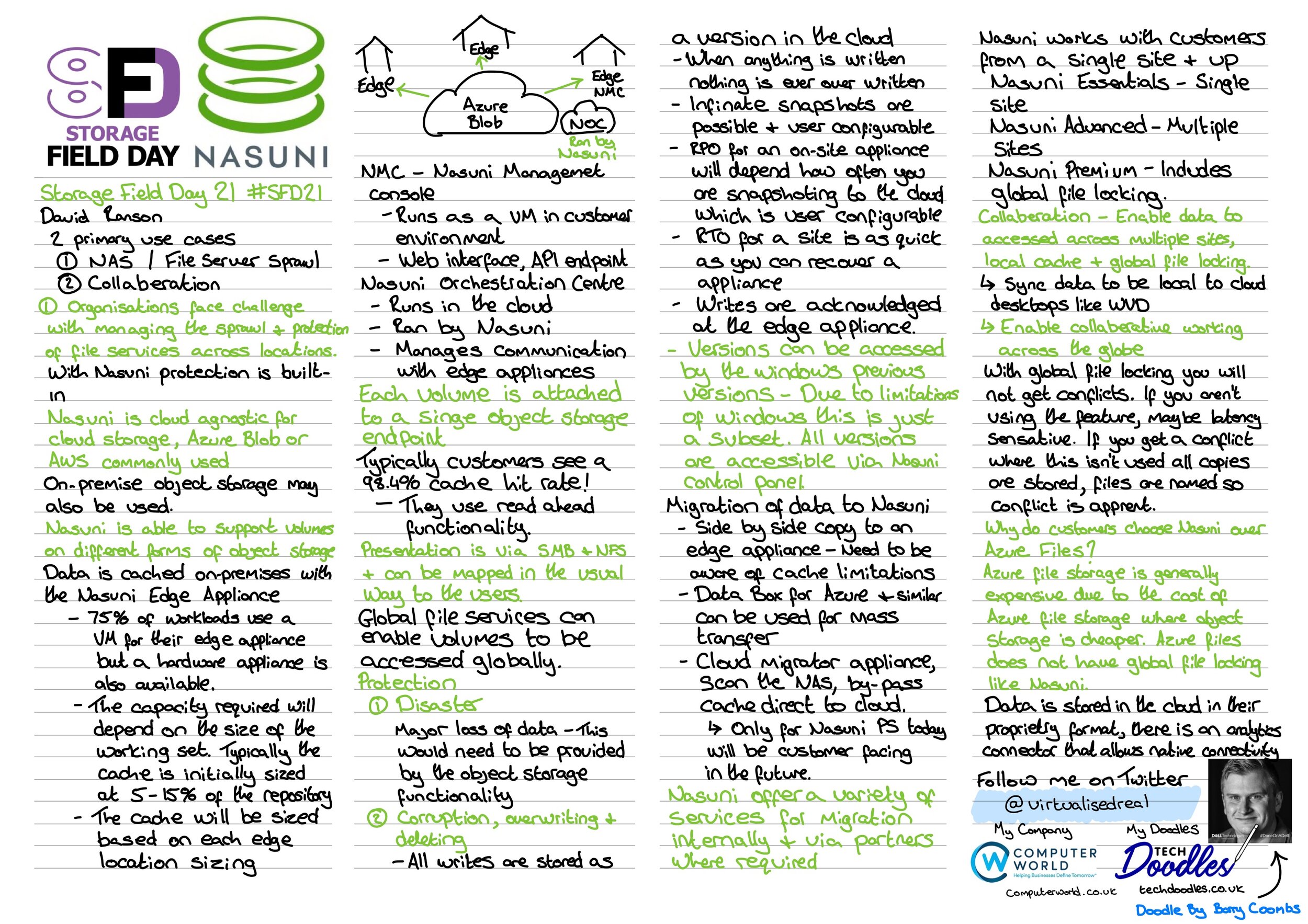Following #SFD21 I met with David Ranson Soulition Architect at Nasuni to get a deeper understanding of the Nasuni Architecture, migration path and use cases.
Here is my doodle for the @PliopsLtd session at #sfd21 they offer a key-value (KV) based storage processor that accelerates, improve reliability and capacity of SSD storage for data persistence and indexing tasks for transactional DB’s, real-time analytics, edge applications and software-defined storage.. This allows their customers to use more affordable QLC SSD’s, whilst outperforming more expensive alternatives as well as helping overcome the processor bottleneck that you will see in most modern solutions with the workloads mentioned.
Unlock the Full Potential of SSDs – Pliops
Their solution is currently (Jan 2021) around two months away from being mass-produced and whilst theoretically could be used in shared storage solutions or delivered as part of a cloud service will initially focus on directly attached storage workloads.
The Pliops storage processors is a half-height, half-length PCIe card that sits in the storage path between your workload and the onboard SSD storage. You reference the storage using a standard NVMe block interface or via a KV (key-value) library API.
The Pliops card takes your in-efficient dataset, applies data protection, thin provisioning and then compression prior to it being written to the SSD’s. The Pliops processor results in 90% less writes and 77% less reads to your SSD’s.
Today the Pliops card has to be used with Linux based workloads and has a starting point of 3 SSDs within a solution supporting up to a maximum of 64TB per processor, you can scale out with multiple cards. They have future plans to support other platforms including VMware.
Their data protection allows for multiple single drive failures, with rapid recovery whilst delivering performance that is faster than RAID 0 with the SSDs alone.
Pliops is typically utilised with a wide variety of database and analytics workloads, including but not limited to MySQL, MongoDB, Redis, Cassandra and SAP Hana.
Conclusion
It was good to hear from the Pliops team especially so early in their journey, they have an innovative solution and if you are looking to reduce costs and increase performance for your highly critical database and analytical workloads you will want to be considering Pliops.
Hammerspace presented on Day 3 of #SFD21 taking place virtually due to the COVID-19 Pandemic. See my doodle above covering their presentation. I will be following up with a few more thoughts and opinions of the presentation after #SFD21 completes.
Intel presented on Day 3 of #SFD21 taking place virtually due to the COVID-19 Pandemic. Please see my doodle above covering their presentation . I will be following up with a few more thoughts and opinions of the presentation after #SFD21 completes.
Be sure to check out my previous doodles covering the Intel Storage Moment event late last year.
Nasuni presented on Day 2 of #SFD21 taking place virtually due to the COVID-19 Pandemic. Please see my doodle above covering their presentation . I will be following up with a few more thoughts and opinions of the presentation after #SFD21 completes.
NetApp presented on Day 2 of #SFD21 taking place virtually due to the COVID-19 Pandemic. See my doodle above covering their presentation. I will be following up with a few more thoughts and opinions of the presentation after #SFD21 completes.
Tintri presented on Day 1 of #SFD21 taking place virtually due to the COVID-19 Pandemic. See my doodle above covering their presentation. I will be following up with a few more thoughts and opinions of the presentation after #SFD21 completes.
You are able to watch the presentation back for yourself on the Storage Field Day website
MinIO Presents at Storage Field Day 21 - Tech Field Day





